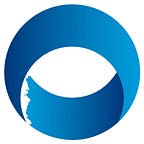Using blockchain to benefit artists: smart policy and good business
As the Executive Director of the Canadian Artists’ Representation (CARFAC), I know all too well the widespread challenges facing our members. In many cases, artists around the world are facing the same issues. Theft. Forgery. Appropriation. Misattribution.
The list goes on.
Let’s consider the digital space. When the internet first emerged, it provided incredible opportunities for artists to collaborate with each other and reach new audiences. Unfortunately, the internet also allowed anyone to upload a digital version of a work, modify it, share it, and profit from it. As a result, there are countless cases where artists are not properly credited for their work, their works are copied without authorization, and they aren’t fairly compensated — if they are compensated at all.
These problems exist in the physical world as well. One only needs to look at the controversies surrounding Norval Morrisseau’s work to understand the need to equip artists, as well as collectors and galleries, with tools to establish a reliable, authoritative, and transparent connection between a creative work (or its digital version), data related to the work (such as its provenance), and its rightsholder(s).
Essentially, the issue is attribution.
It’s one of the reasons I’ve closely followed the launch of Prescient, Access Copyright’s purpose-driven innovation lab. CARFAC is a member of Access Copyright, and we share a long history and a commitment to ensuring visual artists are paid when their works are used, shared, or copied. Leveraging emerging technologies to ensure artists can thrive and profit in the digital space isn’t just righting a wrong, it’s smart policy and good business. CARFAC, Prescient Innovations, Access Copyright, Copyright Visual Arts (COVA-DAAV), and Regroupement des artistes en arts visuels du Quebec (RAAV) have partnered to take a leadership role in this space.
Together, we’re looking to blockchain technology to address the attribution problem. (If you want to learn more about attribution, this video is a good primer.) The Canada Council for the Arts has awarded us a $495K grant to create digital solutions that will help artists assert their rights and verify their works, and art collectors to access a trusted and authoritative record of art ownership and provenance — we call it Imprimo.
What does that mean on a practical level? Think of it as a digital passport for visual art.
Here is how it will work:
1. Artists will able to submit their work to Imprimo for registration.
2. When Imprimo registers the work, it will create a unique fingerprint of the work on a blockchain powered attribution ledger. This will establish a reliable and authoritative connection between the artist and the artwork, as well as other related data, such as copyright and physical ownership.
3. A third party attestation provider — CARFAC, COVA-DAAV and RAAV, in the case of this project — will validate the ownership claims artists submit when they register their work on Imprimo .This will establish a reliable and authoritative connection between the artist and the artwork, as well as other related data, such as copyright and physical ownership.
4. As a public, auditable record, anyone will be able to use Imprimo to authoritatively track ownership, view the copyright owner, and generate a certificate of ownership for verified works.
We’ll have an initial version of Imprimo available to select visual artists in early 2020. With this project, we’re taking an active and important role in shaping how emerging technologies and the internet can better serve artists and their audiences.
We acknowledge the support of the Canada Council for the Arts.
Canadian visual artists who would like to get involved can contact info@prescientinnovations.org.
April Britski is the National Executive Director of CARFAC, the Canadian association for visual artists. She currently lives and works in Burnaby, BC.
